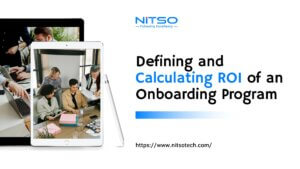In today’s fast-paced and data-driven business landscape, the role of Human Resources (HR) has evolved significantly. Organizations are increasingly recognizing the strategic importance of HR in driving organizational success. To make informed decisions and measure the impact of HR initiatives, companies are turning to HR metrics.
HR metrics are quantifiable measures that provide valuable insights into the performance, effectiveness, and efficiency of an organization’s HR processes and practices. These metrics enable HR professionals to track key indicators, identify areas for improvement, and align HR strategies with overall business objectives.
This comprehensive guide aims to equip Indian professionals with a deep understanding of HR metrics, their significance, and practical applications. Whether you are an HR professional, a business leader, or an aspiring HR practitioner, mastering HR metrics will empower you to drive organizational excellence and create a competitive advantage in the dynamic Indian market.
Content On This Page
What is HR Metrics and Their Importance?
HR metrics are quantifiable measurements that provide valuable insights into the performance, effectiveness, and efficiency of an organization’s human resources practices and processes. These metrics serve as crucial tools for HR professionals to evaluate the impact of their initiatives, identify areas for improvement, and align HR strategies with overall business objectives.
At their core, HR metrics are designed to translate HR data into actionable information that can drive informed decision-making and organizational success. By analyzing key metrics, HR professionals can gain a comprehensive understanding of various aspects of workforce management, including recruitment, retention, training and development, compensation and benefits, and employee engagement.
It’s important to distinguish HR metrics from HR analytics. While HR metrics focus on measuring specific HR factors and indicators, HR analytics involves the application of statistical and analytical techniques to HR data. HR analytics aims to uncover patterns, trends, and correlations that can inform strategic decision-making and predict future outcomes.
The primary objectives of implementing HR metrics in an organization are:
- Measure and track HR performance: HR metrics provide quantifiable measures to assess the effectiveness and efficiency of HR processes, such as recruitment, training, and employee engagement initiatives.
- Identify areas for improvement: By analyzing HR metrics, organizations can pinpoint areas that require attention or optimization, enabling targeted interventions and continuous improvement.
- Align HR strategies with business goals: HR metrics enable organizations to align their HR practices and initiatives with overall business objectives, ensuring that HR efforts contribute directly to organizational success.
- Data-driven decision-making: HR metrics provide data-driven insights that support informed decision-making processes, reducing the reliance on subjective judgments and enhancing the credibility of HR strategies.
- Benchmark and compare: HR metrics allow organizations to benchmark their performance against industry standards or competitors, fostering a culture of continuous improvement and identifying best practices.
By effectively leveraging HR metrics, organizations can gain a competitive advantage by optimizing their workforce management processes, enhancing employee engagement and retention, and ultimately driving better business outcomes.
What are the Types of HR Metrics?
HR metrics encompass a wide range of measures that provide insights into various aspects of workforce management and organizational performance. These metrics can be categorized into several key areas:
Workforce Metrics
- Headcount: Tracks the total number of employees in an organization, often segmented by departments, locations, or job roles.
- Turnover Rate: Measures the rate at which employees leave an organization, either voluntarily or involuntarily, within a specific time period.
- Absenteeism Rate: Quantifies the percentage of employee absences, which can impact productivity and operational efficiency.
Recruitment Metrics
- Time-to-Hire: Measures the average time it takes to fill an open position, from the initial requisition to the candidate’s acceptance of the job offer.
- Cost-per-Hire: Calculates the total costs associated with recruiting and hiring a new employee, including advertising, agency fees, and relocation expenses.
- Source of Hire: Identifies the most effective recruitment channels and sources for attracting quality candidates.
Training and Development Metrics
- Training ROI (Return on Investment): Evaluates the financial impact and benefits of training programs relative to their costs.
- Course Effectiveness: Measures the effectiveness of training programs in improving employee knowledge, skills, and performance.
Compensation and Benefits Metrics
- Compensation Ratio: Compares the organization’s compensation levels to market benchmarks or industry standards.
- Benefits Cost: Tracks the total costs associated with employee benefits, such as healthcare, retirement plans, and perks.
Employee Engagement and Satisfaction Metrics
- Engagement Score: Measures the level of employee engagement, motivation, and commitment to the organization and its goals.
- Net Promoter Score (NPS): Evaluates employee loyalty and their likelihood to recommend the company as a great place to work.
Diversity and Inclusion Metrics
- Diversity Ratio: Tracks the representation of different demographic groups (e.g., gender, ethnicity, age) within the organization.
- Pay Equity: Measures the fairness and equity of compensation practices across different employee groups.
These categories of HR metrics provide a comprehensive overview of an organization’s workforce management practices, enabling HR professionals to make data-driven decisions and drive continuous improvement.
What are the Key HR Metrics and Their Formulas?
While there are numerous HR metrics to track and analyze, several key metrics stand out as critical indicators of organizational performance. Understanding these metrics and their formulas is essential for HR professionals to effectively measure and interpret data. Here are some of the most important HR metrics and their corresponding formulas:
1. Turnover Rate
The turnover rate measures the percentage of employees who leave an organization during a specific period of time. A high turnover rate can be costly and disruptive, making it crucial to monitor and address.
Formula: Turnover Rate = (Number of employees who left during the period / Average number of employees during the period) x 100
2. Cost-per-Hire
This metric calculates the total costs associated with recruiting and hiring a new employee, including advertising, agency fees, relocation expenses, and other related costs.
Formula: Cost-per-Hire = Total recruitment and hiring costs / Number of new hires
3. Time-to-Hire
Time-to-hire measures the average number of days or weeks it takes to fill an open position, from the initial job posting to the candidate’s acceptance of the job offer.
Formula: Time-to-Hire = Sum of days to fill all open positions / Number of open positions filled
4. Training ROI (Return on Investment)
Training ROI evaluates the financial impact and benefits of training programs relative to their costs, helping organizations assess the effectiveness of their training investments.
Formula: Training ROI = (Program benefits – Program costs) / Program costs x 100
5. Employee Engagement Score
The employee engagement score measures the level of employee engagement, motivation, and commitment to the organization and its goals. It is typically measured through employee surveys or assessments.
Formula: Employee Engagement Score = (Sum of positive responses / Total responses) x 100
6. Diversity Ratio
The diversity ratio tracks the representation of different demographic groups (e.g., gender, ethnicity, age) within the organization, promoting diversity and inclusion efforts.
Formula: Diversity Ratio = Number of employees in a specific demographic group / Total number of employees
By understanding and calculating these key HR metrics, organizations can gain valuable insights into their workforce management practices, identify areas for improvement, and make data-driven decisions to enhance organizational performance and employee experience.
What is the Difference between HR Metrics and HR Analytics?
While HR metrics and HR analytics are closely related concepts, it’s essential to understand their distinct characteristics and purposes. Often, the terms are used interchangeably, but they represent different aspects of data-driven workforce management.
HR Metrics:
HR metrics are quantifiable measures that provide insights into the performance, effectiveness, and efficiency of an organization’s HR processes and practices. These metrics focus on measuring specific HR factors and indicators, such as turnover rates, cost-per-hire, employee engagement scores, and diversity ratios.
HR metrics are typically presented as single numerical values or ratios, providing a snapshot of a particular HR aspect at a given point in time or over a specific period. Examples of HR metrics include:
- Turnover rate: The percentage of employees who leave the organization during a defined period.
- Time-to-hire: The average number of days or weeks it takes to fill an open position.
- Training ROI: The financial return on investment from training programs.
HR Analytics:
On the other hand, HR analytics involves the application of statistical and analytical techniques to HR data. It goes beyond measuring individual metrics and aims to uncover patterns, trends, and correlations that can inform strategic decision-making and predict future outcomes.
HR analytics utilizes advanced data mining, predictive modeling, and visualization tools to analyze large datasets and uncover hidden insights. It combines HR metrics with other relevant data sources, such as employee demographics, performance data, and business metrics, to gain a holistic understanding of the workforce and its impact on organizational performance.
Through HR analytics, organizations can:
- Identify factors that influence employee turnover and develop targeted retention strategies.
- Predict future talent needs and optimize recruitment efforts.
- Analyze the impact of training programs on employee performance and productivity.
- Uncover potential biases or inequities in compensation and promotion practices.
The key distinction between HR metrics and HR analytics lies in their scope and depth of analysis. While HR metrics provide a focused view of specific HR indicators, HR analytics offers a more comprehensive and predictive approach by combining various data sources and leveraging advanced analytical techniques.
Effective workforce management strategies often require a combination of both HR metrics and HR analytics. HR metrics provide a foundation for measuring and tracking key performance indicators, while HR analytics offers deeper insights and predictive capabilities to drive informed decision-making and strategic workforce planning.
By understanding the differences between HR metrics and HR analytics, organizations can leverage the strengths of each approach and create a comprehensive data-driven framework for optimizing their human capital and achieving organizational success.
What are the Benefits of Using HR Metrics?
Implementing and effectively utilizing HR metrics can provide organizations with a wide range of benefits that contribute to improved workforce management, increased operational efficiency, and overall organizational success. Here are some key advantages of leveraging HR metrics:
- Data-Driven Decision Making: HR metrics provide quantifiable data and insights that enable organizations to make informed decisions based on facts and evidence rather than relying solely on intuition or assumptions. This data-driven approach enhances the credibility and accuracy of HR strategies and initiatives.
- Identifying Areas for Improvement: By tracking and analyzing HR metrics, organizations can pinpoint specific areas that require attention or optimization. This allows HR professionals to identify pain points, bottlenecks, or inefficiencies in processes such as recruitment, training, or employee engagement, and take targeted actions to address them.
- Measuring the Impact of HR Initiatives: HR metrics serve as a valuable tool for evaluating the effectiveness and return on investment (ROI) of various HR initiatives, such as training programs, performance management systems, or employee wellness programs. This measurement capability enables organizations to assess the impact of their investments and make data-driven decisions about resource allocation.
- Aligning HR Strategies with Business Goals: By aligning HR metrics with overall business objectives, organizations can ensure that their HR practices and initiatives directly contribute to achieving strategic goals. This alignment helps HR professionals prioritize their efforts and make decisions that drive organizational success.
- Benchmarking and Competitive Analysis: HR metrics provide a basis for benchmarking an organization’s performance against industry standards or competitors. This comparative analysis allows organizations to identify best practices, set realistic targets, and develop strategies to gain a competitive advantage in talent acquisition, retention, and workforce management.
- Improving Workforce Planning and Forecasting: By analyzing HR metrics related to workforce demographics, turnover rates, and talent pipelines, organizations can better anticipate future workforce needs and proactively plan for recruitment, succession planning, and talent development initiatives.
- Enhancing Employee Engagement and Retention: HR metrics focused on employee engagement, satisfaction, and turnover can provide valuable insights into factors that influence employee motivation and retention. This knowledge enables organizations to develop targeted strategies to improve employee experience, reduce attrition, and foster a more engaged and productive workforce.
- Promoting Accountability and Transparency: HR metrics introduce a level of accountability and transparency within the HR function. By tracking and reporting on key metrics, HR professionals can demonstrate the value and impact of their efforts, fostering trust and credibility with stakeholders and leadership.
What are Some HR Metrics Examples from Indian Companies?
To better understand the practical applications of HR metrics, let’s explore some real-world examples of how companies in India have successfully implemented and utilized these measures:
- Tata Consultancy Services (TCS): As one of India’s largest IT services companies, TCS has made significant strides in leveraging HR metrics to drive workforce optimization and employee engagement. They closely monitor metrics such as employee attrition rate, training effectiveness, and diversity ratios across their global operations. By analyzing these metrics, TCS can identify talent retention challenges, tailor training programs, and promote a more inclusive workplace culture.
- Infosys: India’s leading IT consulting and software services firm, Infosys, has embraced HR metrics to enhance its talent acquisition and development strategies. They actively track time-to-hire, cost-per-hire, and training ROI to streamline their recruitment processes and ensure that their training investments yield tangible results in terms of employee performance and productivity.
- Hindustan Unilever Limited (HUL): As a prominent FMCG company in India, HUL has implemented a comprehensive HR metrics framework to measure and improve employee engagement and satisfaction. They regularly conduct employee surveys to calculate their employee engagement score and net promoter score (NPS). By analyzing these metrics, HUL can identify areas for improvement in their HR practices, fostering a more engaged and committed workforce.
- ICICI Bank: One of India’s largest private sector banks, ICICI Bank, has leveraged HR metrics to optimize its compensation and benefits strategies. They closely monitor metrics such as compensation ratios, benefits costs, and pay equity to ensure competitive and fair compensation practices. By doing so, ICICI Bank can attract and retain top talent while maintaining a sustainable and equitable compensation structure.
- Mahindra & Mahindra: As a multinational conglomerate, Mahindra & Mahindra has embraced HR metrics to drive diversity and inclusion initiatives across its diverse business verticals. They track metrics such as diversity ratios, gender representation, and pay equity to promote a more inclusive workplace and foster a culture of equality and fairness.
These examples demonstrate how companies in India are leveraging HR metrics to gain valuable insights, drive strategic decision-making, and optimize their workforce management practices. By embracing data-driven approaches, organizations can enhance their competitive advantage and cultivate a high-performing, engaged, and diverse workforce.
What are the Best Practices for Implementing HR Metrics?
Implementing HR metrics effectively is crucial for organizations to reap the full benefits of data-driven workforce management. Here are some best practices to consider:
- Align metrics with business objectives: Ensure that the HR metrics you choose to track are directly aligned with your organization’s strategic goals and priorities. This alignment ensures that the insights gained from metrics contribute to achieving desired business outcomes.
- Data quality and consistency: Accurate and consistent data is the foundation of effective HR metrics. Establish clear data collection and reporting processes, and invest in robust HR information systems to ensure data integrity and reliability.
- Stakeholder buy-in: Involve key stakeholders, including senior leadership, department heads, and employee representatives, in the process of selecting and implementing HR metrics. Their buy-in and support are essential for successful adoption and utilization of metrics across the organization.
- Communication and training: Clearly communicate the purpose, definitions, and methodologies behind each HR metric to all relevant stakeholders. Provide training and resources to ensure a consistent understanding and interpretation of the metrics throughout the organization.
- Benchmarking and industry standards: Leverage industry benchmarks and best practices to establish meaningful targets and goals for your HR metrics. This allows you to compare your organization’s performance against industry standards and identify areas for improvement.
- Continuous monitoring and adjustment: HR metrics should be regularly monitored and reviewed to ensure their ongoing relevance and effectiveness. Be prepared to adjust or introduce new metrics as your organization’s needs and priorities evolve over time.
- Data visualization and reporting: Present HR metrics in a clear and visually appealing format, such as dashboards or reports, to facilitate understanding and decision-making. Effective data visualization can help stakeholders quickly identify trends, patterns, and areas that require attention.
- Action planning and follow-up: Analyzing HR metrics is only the first step. Develop action plans and follow-up strategies to address any issues or opportunities identified through the metrics. Continuously monitor the impact of these actions and make necessary adjustments.
Article you might be interested in Calculating ROI of an Onboarding Program: Key Metrics and Considerations
Parting Words
In the dynamic and competitive business landscape of India, HR metrics have emerged as a powerful tool for organizations to optimize their workforce management strategies and drive organizational success. This comprehensive guide has explored the fundamentals of HR metrics, their significance, types, key metrics, formulas, real-world examples, and best practices for implementation.
By mastering HR metrics, organizations can gain valuable insights into their HR processes, identify areas for improvement, and align their HR strategies with overall business objectives. The ability to measure and track key indicators such as turnover rates, cost-per-hire, employee engagement scores, and diversity ratios empowers HR professionals to make data-driven decisions and drive continuous improvement.
We encourage readers to actively explore and implement HR metrics within their organizations, leveraging the insights and strategies shared in this guide. Additionally, we invite readers to share their experiences, challenges, and successes with HR metrics in the comments section below, fostering a collaborative learning environment and contributing to the collective knowledge of the Indian HR community.








0 Comments